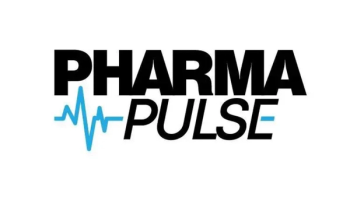
Embedded Product Intelligence’s Role in Maintaining Cold Chain Integrity
In the second part of her Pharma Commerce video interview, Kirsten Newquist, Identiv’s CEO, describes why this technology is essential for pharmaceutical safety and efficacy.
In a video interview with Pharma Commerce, Kirsten Newquist, Identiv’s CEO, defines “smart pharma packaging” as the integration of technology into pharmaceutical packaging to enhance product identification, tracking, and patient engagement. She explains that packaging primarily involves embedding technologies such as RFID radio-frequency identification (RFID) or Bluetooth low energy (BLE) into pharmaceutical containers. These technologies assign a unique digital ID to each package, enabling serialization, which is critical for tracking and traceability across the global supply chain.
This digital ID allows stakeholders—from manufacturers to pharmacists and patients—to verify a drug’s authenticity at every step of its journey. This significantly reduces the risk of counterfeit drugs entering the system, as products can be authenticated upon delivery or administration. Newquist emphasizes that this kind of smart packaging not only strengthens supply chain security but also fosters better patient engagement, offering real-time data that can support dosage verification and proper usage.
Additionally, she notes a secondary dimension of smart packaging: smart drug delivery systems. These include technologically enhanced devices like auto-injectors, smart pillboxes, or connected syringes, which offer further layers of verification and ensure patients receive the correct medication and dosage. While this may go beyond traditional packaging, it aligns with the broader goals of improving safety, compliance, and confidence in the pharmaceutical supply chain.
Overall, smart pharma packaging plays a crucial role in combating drug counterfeiting by improving transparency and traceability from production to patient use. By embedding intelligence into packaging and delivery systems, the pharmaceutical industry is better equipped to protect product integrity and ensure patient safety in an increasingly complex global supply chain.
Newquist also comments on the role embedded product intelligence plays in maintaining cold chain integrity, and why is this so critical for pharmaceutical safety and efficacy; how regulatory mandates, such as the Drug Supply Chain Security Act (DSCSA), influence the adoption of smarter packaging technologies across the industry; some of the biggest challenges pharmaceutical companies face in implementing this infrastructure, and much more.
A transcript of her conversation with PC can be found below.
PC: What role does embedded product intelligence play in maintaining cold chain integrity, and why is this so critical for pharmaceutical safety and efficacy?
Newquist: In addition to a digital ID, you can also embed sensors into the smart packaging, so you can embed temperature sensors, humidity sensors, pressure sensors, and obviously, probably the most critical for cold chain management is temperature sensors.
What this really enables you to do—especially if you're using active-sensing technology in combination with RFID—is really be able to track in real time the temperature of these very expensive, organic pharmaceuticals that are really driving the industry growth today. I think it's absolutely a critical part of what smart packaging can do, and as you said, the rise of personalized medicine, the rise of all these organic compounds that are being developed by the pharmaceutical industry, they absolutely do require very careful monitoring throughout the supply chain.
I think this technology that enables not only the digital identification—but can also include sensors to monitor temperature—can be a real game changer, by ensuring that these drugs are being taken through the supply chain at the appropriate temperature. By getting this information in real time, if they see that it's not being maintained at the proper refrigeration level, there’s actually things that they can do to ensure it gets back into refrigeration to really maintain the compliance that they need for the right temperatures. We think that's a really important part of the smart packaging trends.
Newsletter
Stay ahead in the life sciences industry with Pharmaceutical Commerce, the latest news, trends, and strategies in drug distribution, commercialization, and market access.





